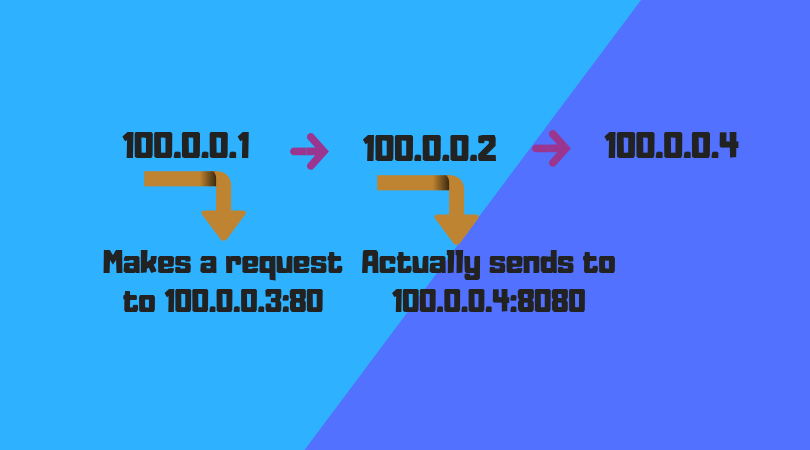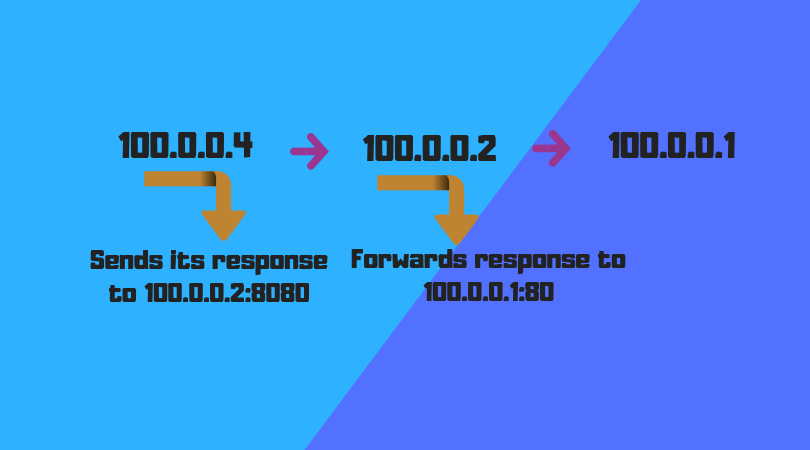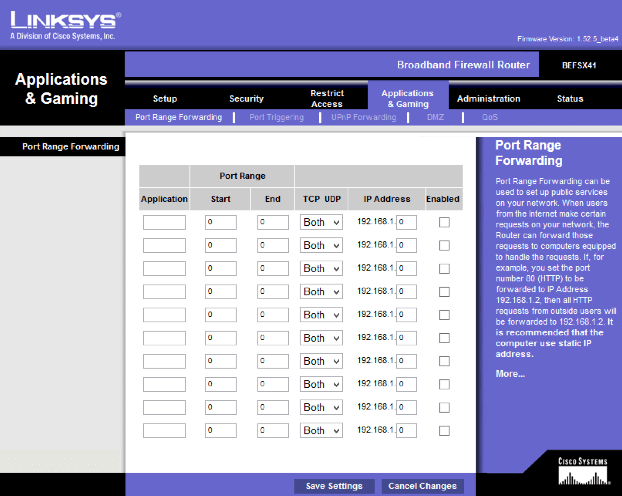Port forwarding, as the name implies, is a networking technique that redirects internet traffic bound for a certain IP/port combination to a different IP/port combination.
This can be implemented either through software that take care of the redirection automatically or by adding a piece of hardware such as a router in your networking topology.
The rationale behind port forwarding is to increase security by keeping undesired traffic outside of your network. You might have even used port forwarding in order to access certain online gaming servers.
However, if you are unfamiliar with the concept and how you can setup port forwarding yourself, you’ll find all answers in the passages below.
How does port forwarding work?
In order for computers to communicate online, they need some sort of information. Just as emails need an address to communicate, computers need data packets for successful delivery. A data packet is a payload, which contains your data along with header information. If you do not know what a header is, it is basically an address file, which contains the origin and destination IP addresses.
Typically, routers handle all the work related to data packets, in a sense, which packets needs to travel where, however port forwarding handles things a bit differently. If you configure it in your router or use the built in port forwarder of your VPN client then it will automatically jot down all the original destination headers and rewrite them before forwarding them to an intermediary host resource (computer/ server).
Now you might be wondering why send data packets to a different resource other than the intended one. Well that is because this additional process helps mask your original IP address.

Why use port forwarding?
Aside from online gaming and boosting downloading speeds, Port forwarding has a lot if security and privacy benefits as well. For one, it can help mask public IP address and restricts unauthorized access to resources on a private network, which in turns cloaks your network resources (i.e. computers and servers).
Port forwarding also streamlines network communications as it limits network administrators to use a single IP for external requests while allocating different server resources with varying IPs to conduct tasks internally. By limiting all networks requests to a single IP, administrators can accomplish multiple tasks while concurrently restricting all unrelated traffic.
Port forwarding is ideal for office networks, online gamers and hiding from outside world.
Working example of port forwarding
Port forwarding is relatively easy to understand and for someone who has dealt with networks before it is quite straightforward. However, if you are new to all this then take a look at the example below.

As you can see in the table above, IP address 100.0.0.1 transmits a request 100.0.0.3 on port number 80, however instead of 100.0.0.3 receiving the request, IP-100.0.0.2 that is an intraday IP, intercepts it. After intercepting the data packet IP-100.0.0.2 alters the packet header and forwards it to IP-100.0.0.4 on port 8080.
Now in order to send the response back to 100.0.0.1, the intermediary IP-100.0.0.4 sends the response back to 100.0.0.2, which again rewrites the packet header but this time mentioning that the response is from 100.0.0.3 and sends it back to 100.0.0.1.

Even though the actual request of 100.0.0.1 never directly reached 100.0.0.3 due to multiple interception and rerouting of data packets, 100.0.0.1 still sees the response to be from 100.0.0.3 despite 100.0.0.4 being the end destination.
How do I set up port forwarding?
Configuring port forwarding with your router is quite easy considering you know a couple of things like:
- Your router configurations like gateway address (example: 192.166.0.2). If you are unsure about your specific router configuration then you should check out this link
- Port and range of ports required for forwarding.
- IP addresses of the computers you are forwarding to.
Well than now that, you have everything out of the way it is time to configure port forwarding on your router.
- Open up the configurations page of your particular router and look for the page that says port forwarding, which can be typically found under security settings.
- Now look for where it says Application and enter whatever name you like, just make sure it makes sense to you.
- After that, define the starting and ending ranges of ports that you wish to forward to. If you just want to forward to a single port then you might just want to provide the starting port and leave the ending port empty.
- Now select the protocols. You can choose the one you prefer as it totally depends upon your specific requirements.
- Enter the IP addresses you want to forward to.
- That’s it, you are done.

You can also check out an example of port forwarding rules below.
| Name | Port range | Protocols | IP addresses |
|---|---|---|---|
| Torrenting | 5600 | TCP&UDP | 192.168.2.1 |
| Streaming | 7777 | TCP | 192.168.2.2 |
| Gaming | 12300 | TCP&UDP | 192.168.2.3 |
| Home | 2334- 2555 | TCP&UDP | 192.168.2.4 |
Port forwarding in reference to proxies & VPNs
The concept of port forwarding is essential for online security, and the best VPN with port forwarding employs this technique to shield users from direct contact with web servers. Proxies and VPN services utilize port forwarding to intercept, rewrite, and transmit data packets throughout the network, enhancing privacy and security for users.
What is port forwarding used for?
As I said earlier, there are many commercial and noncommercial uses of port forwarding; however, I still feel we should discuss some of its real world examples. Therefore, I have compiled a comprehensive list all the potential uses of port forwarding in a table below.
| Remotely access IP cameras from anywhere. |
| Remotely access computing resources |
| Online and server based gaming |
| Email and online chatting securely |
| Boost up torrenting speeds |
| Port testing |
| Router optimization |
| Access geo restricted websites |
| Protection against DDoS Attacks |
Is Port Forwarding even safe?
Port forwarding through a router in itself is not secure, as there are plenty of loopholes to deal with. Malicious hackers often target vulnerabilities in online computing devices through open ports. However, as we discussed earlier, port forwarding enabled routers automatically restricts unauthorized IPs from establishing connection with your device.
Therefore, the only thing that would be comprised in such a case would be your router, which is great considering that your computer, which has all your important files and data is left unharmed. With that said, a compromised router does leave you with one less layer of security to keep you out of harm’s way. Therefore, you should consider a VPN service to carry on your port forwarding tasks as opposed to using port forwarding on its own.
Does VPN work with Port Forwarding
Technically most VPNs do not tend to work with port forwarding in place, simply because it blocks many connection requests that you might require. Therefore, you may have to compromise on either unwanted network traffic or privacy. With that said, some VPN providers actually include a port forwarding add-on with their application, which safely restricts unwanted traffic while providing complete access to safe web pages, games and file sharing programs.
Different Countries IP Addresses:
Have a look at the following guides to change your IP address to your preferred region:
- Get an Isle of Man IP Address
- Get a Greenland IP Address
- Get a Bosnia & Herzegovina IP Address
- Get a Hungarian IP Address
- Get a Denmark IP Address
- Get a Nigeria IP Address
- Get a Saudi Arabia IP Address
- Get a Qatar IP Address
- Get a Macedonian IP address
- Get an Ecuador IP Address
- Get an Iran IP Address
- Get a Malaysian IP Address
- Get a Cyprus IP Address
- Get a Romania IP Address
- Get a US IP Address
- Get a Indian IP Address
- Get a Russian IP Address
- Get a Canadian IP Address
- Get an Italian IP Address
- Get a South Africa IP Address
Wrapping up!
While port forwarding is a convenient way of streamlining and securing network traffic, there are a couple of issues with this technology that you should be aware of. For one, port forwarding restricts all the traffic to a single port, therefore the computing resource that is implementing port forwarding on network requests can only view the information as coming from the router instead of the intended machine.
Besides that, port forwarding can open up network ports on other commuting resource, which can potentially allow unwanted or unauthorized access. That said, port forwarding through a trusted and reputable VPN service can expose you to a world online privacy and internet freedom.
I hope that you found my blog useful and I hope I helped you explain what is port forwarding a bit better.
